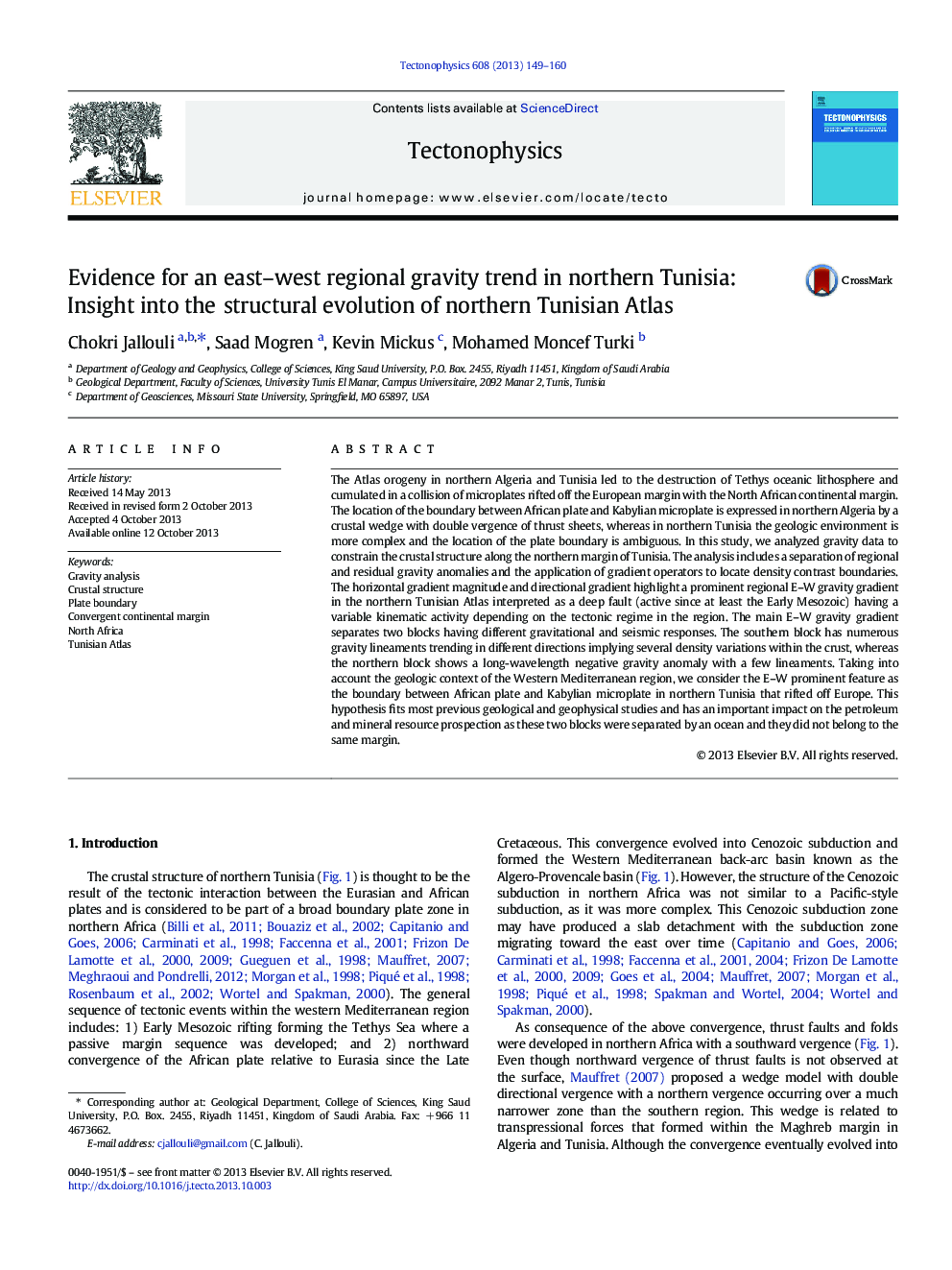| Article ID | Journal | Published Year | Pages | File Type |
|---|---|---|---|---|
| 6433931 | Tectonophysics | 2013 | 12 Pages |
â¢Analyses of gravity data to constrain the crustal structure of northern Tunisiaâ¢Apply semi-automatic methods to locate and highlight major density variationsâ¢Evidence of a E-W corridor interpreted to be the result of a major deep faultâ¢Place of the E-W corridor in the Western Mediterranean geodynamic evolution
The Atlas orogeny in northern Algeria and Tunisia led to the destruction of Tethys oceanic lithosphere and cumulated in a collision of microplates rifted off the European margin with the North African continental margin. The location of the boundary between African plate and Kabylian microplate is expressed in northern Algeria by a crustal wedge with double vergence of thrust sheets, whereas in northern Tunisia the geologic environment is more complex and the location of the plate boundary is ambiguous. In this study, we analyzed gravity data to constrain the crustal structure along the northern margin of Tunisia. The analysis includes a separation of regional and residual gravity anomalies and the application of gradient operators to locate density contrast boundaries. The horizontal gradient magnitude and directional gradient highlight a prominent regional E-W gravity gradient in the northern Tunisian Atlas interpreted as a deep fault (active since at least the Early Mesozoic) having a variable kinematic activity depending on the tectonic regime in the region. The main E-W gravity gradient separates two blocks having different gravitational and seismic responses. The southern block has numerous gravity lineaments trending in different directions implying several density variations within the crust, whereas the northern block shows a long-wavelength negative gravity anomaly with a few lineaments. Taking into account the geologic context of the Western Mediterranean region, we consider the E-W prominent feature as the boundary between African plate and Kabylian microplate in northern Tunisia that rifted off Europe. This hypothesis fits most previous geological and geophysical studies and has an important impact on the petroleum and mineral resource prospection as these two blocks were separated by an ocean and they did not belong to the same margin.
